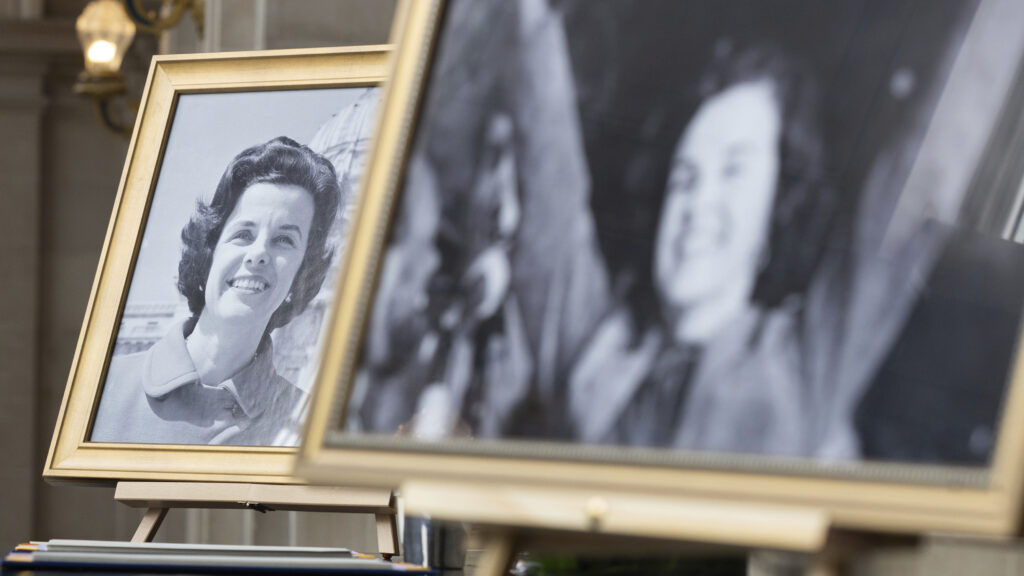The trailblazing life of Senator Dianne Feinstein of California, who died on Friday, covers nearly a century of American history, including changes in health care and medicine. Her struggle with shingles, which sent her to the hospital in February and contributed to the deterioration of her health — leading to encephalitis and facial paralysis — also reflects the great shifts regarding that disease.
Shingles occurs as a reactivation of the chickenpox virus (varicella-zoster virus, or VZV), one that had yet to be isolated when Feinstein was born (it was in 1953), and caused 3 million cases a year until the 1990s.
advertisement
In the span of Feinstein’s life — which outlasted her expectancy at birth by 35 years — a vaccine against chickenpox was introduced (in 1995) and became a routine children’s vaccine. Chickenpox cases have become rarer and rarer, falling from 4 million a year prior to the introduction of the vaccine to fewer than 150,000.
And in recent years, worry over VZV has changed: it is shingles, and not chickenpox, that is a cause for concern. Although there are vaccines against it (Feinstein had been vaccinated), cases have been increasing for decades, reaching a million a year. If chickenpox may soon be a disease of the past, the same isn’t necessarily true of shingles, at least for those older than Generation Z.
How do we get shingles anyway?
“Virtually everyone over 30 […] has been exposed to the [chickenpox] virus, whether they remember having chickenpox or not. And so everybody over 30 is susceptible to zoster at any time during their life,” said Jennifer Moffat, a professor of microbiology and immunology at SUNY Upstate Medical University.
advertisement
When someone has chickenpox, the virus remains dormant in their system, much like herpes. But it can reactivate — due to lowered immunity, for instance — causing shingles. Every year, about a million new cases of shingles are diagnosed, and the number has increased among most age groups.
“It started in the ‘70s, and we think it’s a change in our lifestyle, a change in our environment, a change in our lifespan. We don’t know,” said Moffat. People living longer are certainly a factor, “[b]ut even at younger ages, there’s more and more cases of shingles,” she said.
People who have shingles shed the wild version of the VZV virus, which is different from the one used for the chickenpox vaccinations, and can cause infections (typically asymptomatic) even in people who have been vaccinated against chickenpox. The virus then stays in the system, much as it would after a chickenpox case, but can come back as shingles.
This can happen at any age, but it is more common after 60, and more likely to have stronger symptoms and more severe complications, although it’s not entirely clear why that is, said Alessandro Sette, a professor of immunology and co-director of the Center for Vaccine Innovation at the La Jolla Institute for Immunology. “As you get older, your immune system may be less effective in keeping the reactivation of the virus back, or the virus may be, for whatever reason, more prone to reactivate in older people,” he said.
Some research shows that children vaccinated against chickenpox have much lower chances of developing shingles, but the cohort of people who received the chickenpox vaccine is still too young for scientists to know whether this will be true later in life.
“We would have to wait another 20 or 30 years to know how frequently 50- and 60-year-olds who have been vaccinated as opposed to naturally having had chickenpox […] get shingles,” said Sette. “People are not old enough to know that right now.”
The Centers for Disease Control and Prevention is hopeful: “As the first chickenpox-vaccinated groups age, we expect to see a continuing decline in rates of shingles between previous and future generations, making shingles much rarer,” a spokeswoman said in an email.
There is a vaccine for that
Luckily, people don’t have to wait for shingles to become less prevalent — or even disappear — to protect themselves from it. Currently the CDC recommends those over the age of 50 to get two doses of Shingrix, a GSK vaccine launched in 2017, which is 97% effective in preventing shingles in people aged 60 to 69, and 91% effective in people 70 and older.
Prior to the introduction of Shingrix, people were vaccinated with Zostavax, which had been available since 2006, but had a much lower efficacy: 51% against shingles, and 67% against long-term nerve complications related to it. Those who received Zostavax should also get both doses of Shingrix, too, to boost their immunity. (It is not confirmed what vaccine Feinstein received.)
Unfortunately, uptake of the shingles vaccine is low: Fewer than 35% of the people over 60 have received the vaccine, and fewer than 20% of Black and Hispanic people have. There are many reasons for this, including a simple one: “People avoid it because it hurts,” said Moffat. “It’s a sore arm and fever, shakes, aches — it’s bad and it’s a two dose. So people often will get the first and not come back for the second.”
This pales, of course, in comparison with shingles itself, which can cause extreme pain, affecting the facial nerves. It can even affect organs. “Shingles can go into the brain instead of out of the skin. So there’s quite a bit of mysterious illnesses that could be linked to a reactivation of the virus” said Moffat. “It’s very insidious.”
There is a chance, though, that a gentler vaccine could appear. “I have been personally seeing new research coming out. Manuscripts are in process in publication about an mRNA vaccine against the same protein — glycoprotein E — that is in Shingrix,” said Moffat. She hopes an mRNA vaccine would cause fewer side effects, encouraging people to take it. “So if we had an easier vaccine to take, we might increase coverage. We might then see a drop in shingles,” she said.

